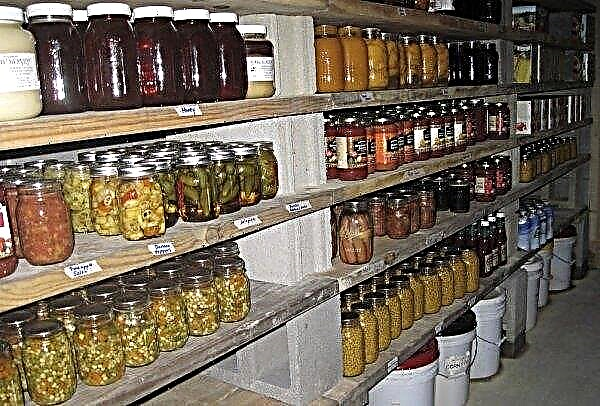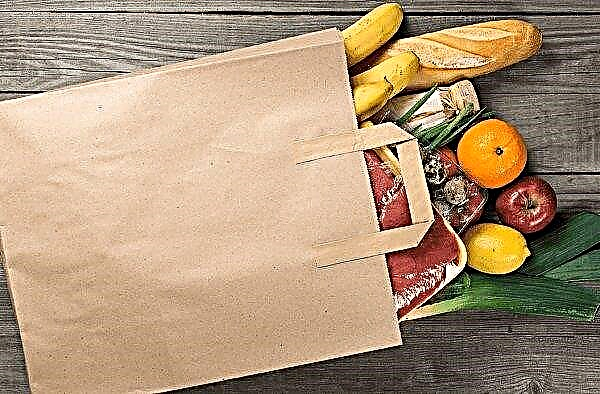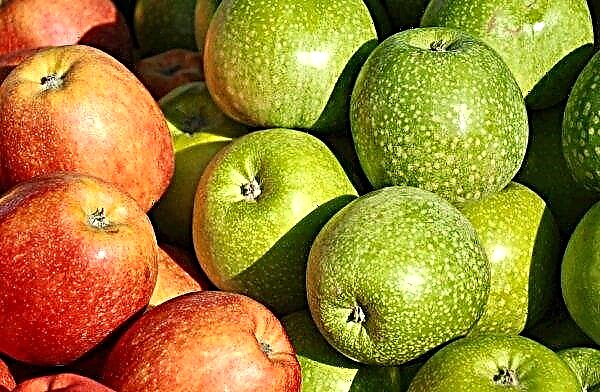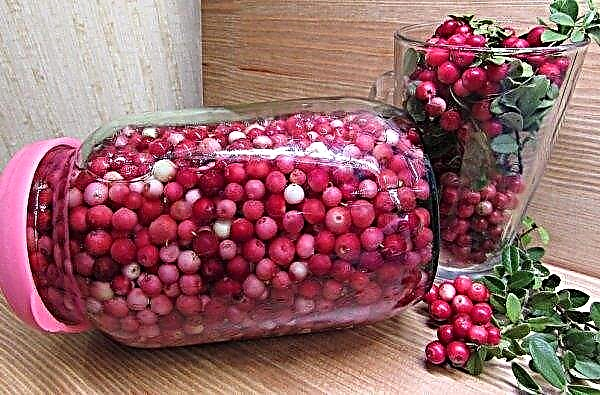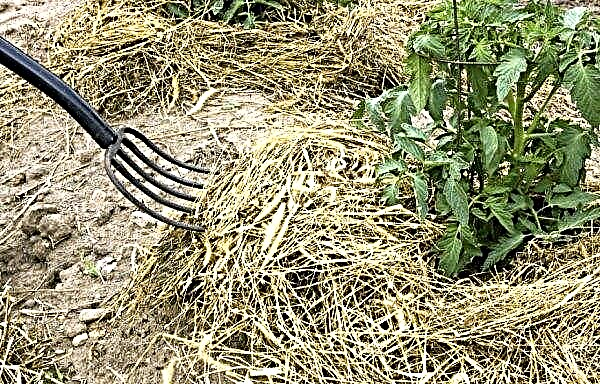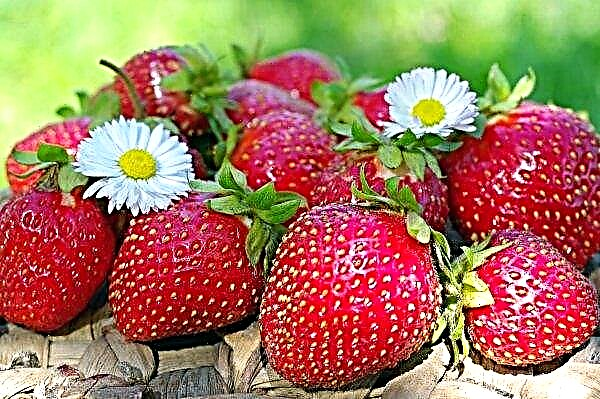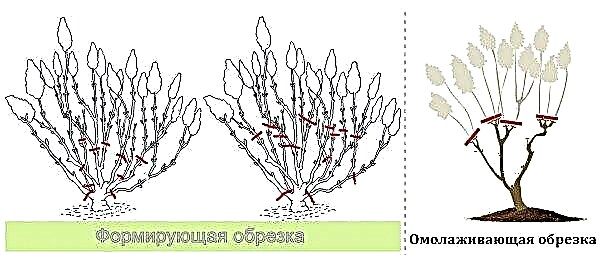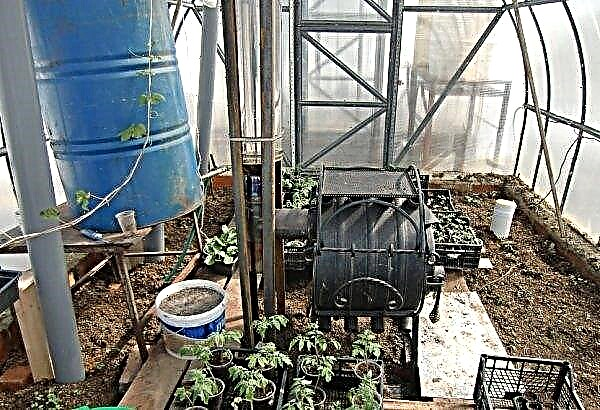Carrot is a rather capricious vegetable, the storage of which requires the maintenance of certain conditions. To maximize the shelf life of the root crop, before harvesting for the winter, it must be properly cut and carefully prepared. Learn how to do it at home.
Signs of carrot maturity
Carrot is a two-year-old plant, which in the first season of growth forms an oblong root crop, for which it is grown. The root crop has a very thin and delicate peel, which easily passes pathogenic bacteria, as a result of which the carrots quickly germinate, deteriorate and rot. For harvesting for the winter, you need to choose fully ripened, healthy vegetables without symptoms of rotting and mechanical damage.
Signs of fruit maturity:
- yellowing of the lower leaves indicates that the root crop has matured and needs to be dug up. If yellowing touched the foliage located in the middle of the green mass - the harvest dates were missed, which could negatively affect the storage of vegetables;
- the presence on the dug fruit of thin strings-roots of a white color indicates its full maturation;
- cracks in the root crop are evidence of carrot overripe.
You should also be guided by the harvesting dates set for each grade. Late varieties are usually harvested in the first month of autumn (three weeks), or before the onset of the first frost, if warm and dry weather prevails on the street. Early ripe and mid-ripening carrots are ready for harvest at the end of summer.
Vegetables harvested before the required time do not ripen completely, do not have time to accumulate a sufficient amount of sugar and other nutrients, which affects their durability and taste.
Important! It is not recommended to overexposure early varieties of orange vegetables in the ground, otherwise the root crops will quickly begin to crack and rot.
Proper harvesting of carrots from the beds
Proper harvesting of carrots is one of the main factors affecting the duration of its storage.
Experts advise harvesting fruits in dry and windy weather, with optimal temperature values of + 1 ... + 5 ° C. It is believed that carrots, dug in cool weather, will be stored longer, since all physiological processes at low temperatures are slowed down, and this has a positive effect on the shelf life of the fruit.
Small vegetables are allowed to be removed from the soil by hand, long and large - with a shovel. In large areas, root crops are harvested using walk-behind tractors or mini-combines. Accurate fruit extraction is considered the main harvesting rule. Damage, breaks, cuts of root crops should not be allowed, since all this significantly reduces the shelf life of vegetables.
Did you know? The birthplace of an orange vegetable is Afghanistan, where it grows in the wild. Surprisingly, it initially had a purple color. The world owes the appearance of orange carrots to breeders from the Netherlands, who bred the fruit specifically for the royal dynasty of Orange, the dynastic color of which was exactly orange.
Why cut carrots
Once the carrots are harvested, vegetable growers are advised to cut the tops; otherwise, the foliage will begin to evaporate moisture, and the roots will wither, which significantly worsens their keeping quality. The pruning procedure makes it possible to preserve nutrients and moisture in vegetables, thereby preserving the nutritional value and pleasant taste. The leaves should not be unscrewed or torn off, it must be carefully cut using a sharpened, sanitized knife or garden pruner. For harvesting for the winter, carrots can not be cleaned of soil residues and not washed.
When digging up, it is strictly forbidden to beat the fruits against each other to shake off the soil., since such manipulations lead to the formation of microcracks and a violation of the integrity of root crops, which does not affect their safety in the best way.

Preparing and trimming carrots for storage
The tops, which remain on the carrots after harvesting, soon begin to grow actively, taking moisture and valuable substances from the fruit. That is why the process of its removal is considered mandatory.
Carrying out the procedure for cutting carrots, it is recommended to take into account the shelf life:
- up to 3-4 months - pruning is done 2-3 cm above the root head;
- up to 8-12 months - cut the tops with the fetal head by 2-3 cm.
- cut the main green mass, removing the tops slightly above the upper edge of the root crop;
- carrots are dried in the sun throughout the day;
- cut 0.5-1 cm from the head of the fruit. If there are cracks on the surface of the fruit, ring lesions - remove from the head up to 1.5–2.5 cm;
- cut off the tail, because it is from it that the rotting of the vegetable begins. The tail is cut in the part where its width is approximately 0.5 cm.
Before laying for storage, vegetables should be well dried in the sun for 2-3 hours, placing them in one layer on a plastic film. During drying, the places of the slices form a crust, which will protect against further damage and rotting of root crops. After drying, the fruits are necessarily placed for one day in a cool place, and only then stored in the necessary storage - cellar, shed, apartment or balcony.
Carrot storage at home
Long-term storage of carrots involves the creation of certain conditions that will successfully preserve the taste of the fruit for many months. There are several ways and places to store vegetables.
In the cellar
The best place to preserve carrots is a basement or cellar.
Before laying carrots, the room should be properly prepared:
- Ventilate well. It is important that there are no odors, dampness, or unpleasant odors in the cellar that easily absorb root crops.
- Sanitize. The walls and ceiling of the room must be treated with a 2% solution of chlorine lime, which will destroy fungi and viruses, as well as prevent their development.
- Whitewash. Two weeks after the treatment, it is recommended to whitewash the walls in the cellar using freshly slaked lime.
Important! Disinfection measures should be carried out at least 1 month before the upcoming laying of vegetables.
In addition to preparing the premises, it is necessary to organize in it optimal conditions for storage:
- 0 ... + 2 ° С are considered the most comfortable temperature indicators. At lower temperatures, carrots run the risk of freezing; at high temperatures, they wither and dry;
- humidity level within 80–85%. If the humidity is too high, the roots will begin to rot;
- ventilation. Experts recommend minimizing the flow of air into the room, and make the ventilation moderate.

As for the storage of vegetables in the basement, there are several most simple and affordable options:
- Boxes with sand or sawdust. Carrots are laid in containers and sprinkled with sand or sawdust of coniferous trees. Layers alternate. It is very important to locate the root crops at some distance from each other so that they do not touch.
- Plastic bags. You can take packages of small volume up to 1-2 kg, if there is a lot of yield - up to 25 kg. Before laying the roots, they carefully examine them for damage, remove the rejected ones, pack them in bags, close them tightly and place them in the basement on shelves or special pallets. From time to time they are checked for damage.
- Bulk method. The most common option for storing a large volume of vegetables is considered bulk, in which carrots are poured in a slide directly on the floor, or in special compartments with flooring. A significant disadvantage of the described method is the high risk of damage to the crop by rodents and other parasites.
Did you know? The constant consumption of the described root crop can lead to a change in the color of the skin and other integuments to yellowish-orange. This property is often used by employees of zoos to maintain the brightness of the color of flamingos.
In the apartment
In the absence of a cellar or basement, carrots can be stored in apartment conditions. Of course, the easiest method is to place root crops in the refrigerator, in the lower compartment, designed for vegetables. To do this, they should be thoroughly cleaned of dirt, washed, dried and folded in plastic bags.
It is convenient enough to store vegetables in plastic containers with sealed lids.
With this method:
- carrots are cleaned of soil, washed, dried;
- on the bottom of the container they lay a paper napkin, put the fruits on top;
- the container is tightly closed with a lid.
If the carrot harvest cannot please with its abundance, it is advisable to grind the vegetables, put them in plastic bags or plastic containers and freeze in a freezer.

In the porch and on the balcony
To preserve carrots for the winter, a balcony or porch is also suitable. However, in this case, it will be necessary to ensure that the temperature indicators do not fall below 0 ° C and direct sunlight does not fall on the root crops, otherwise the fruits will sprout or decay.
You can store vegetables on the balcony using:
- wooden or plastic boxes in which root crops are laid and sprinkled with sawdust and sand;
- plastic bags or sugar bags;
- pan with paraffin. Pure and dried fruits are dipped in a bowl with molten paraffin mixed with a small amount of beeswax. Vegetables are stored in paraffin at a temperature of 0 ... + 2 ° C for 4-5 months;
- container with peat. Peat is considered an excellent material for the preservation of vegetables, as it is characterized by bactericidal qualities and poor thermal conductivity. Carrots are placed in rows in boxes filled with peat. In spring, peat mix is used as a fertilizer for indoor flowers.
Boxes where vegetables are placed, regardless of their filler, must be tightly closed with a lid to prevent air from entering. In severe frosts, the container must be wrapped in a warm old blanket or with a special insulation.Important! Carrots should not be stored close to apples and potatoes, because there it will lose its taste.
When harvesting vegetables for the winter, experts advise to adhere to several recommendations:
- the best preservation is possessed only by fully ripened, healthy fruits;
- for long-term storage, large specimens must be selected, and small fruits should be processed faster;
- after cutting the tops, it is imperative to wait until the cutting site dries and tightens with a crust;
- Before laying, it is mandatory to dry not only vegetables, but also the room;
- in case of damage to root crops, it is not necessary to sort them out. Sick vegetables should be carefully removed, and the area where they were located should be sprayed with fluffy lime to completely destroy the causative agents of the disease.
 So, carrots are pretty moody in terms of storage. However, having carefully read the rules and methods of its preservation, each gardener will be able to extend the shelf life of the fruit until the next season. Choosing the appropriate option, experts also advise taking into account the variety of root crops and the climate of the corresponding region.
So, carrots are pretty moody in terms of storage. However, having carefully read the rules and methods of its preservation, each gardener will be able to extend the shelf life of the fruit until the next season. Choosing the appropriate option, experts also advise taking into account the variety of root crops and the climate of the corresponding region.

